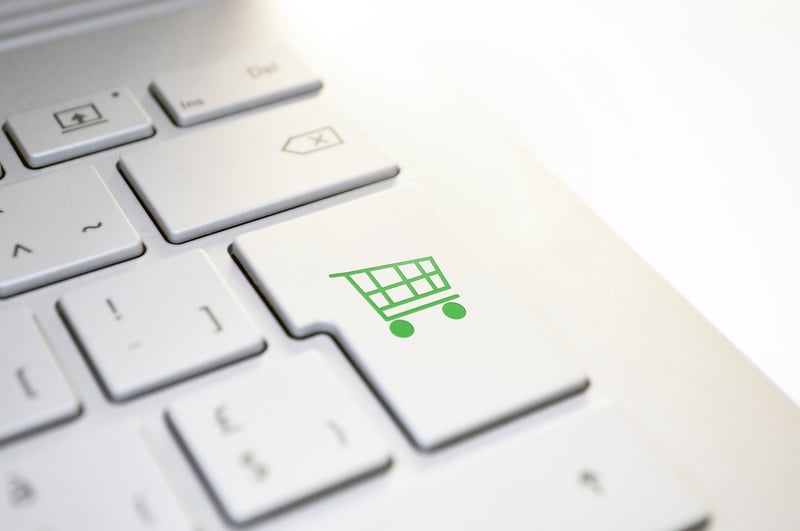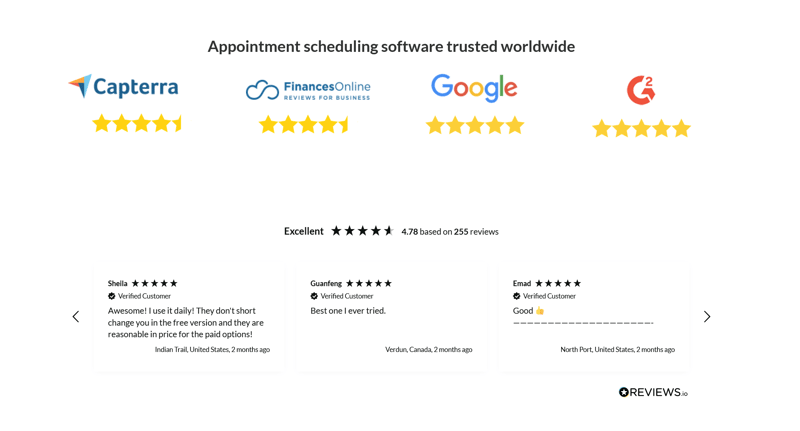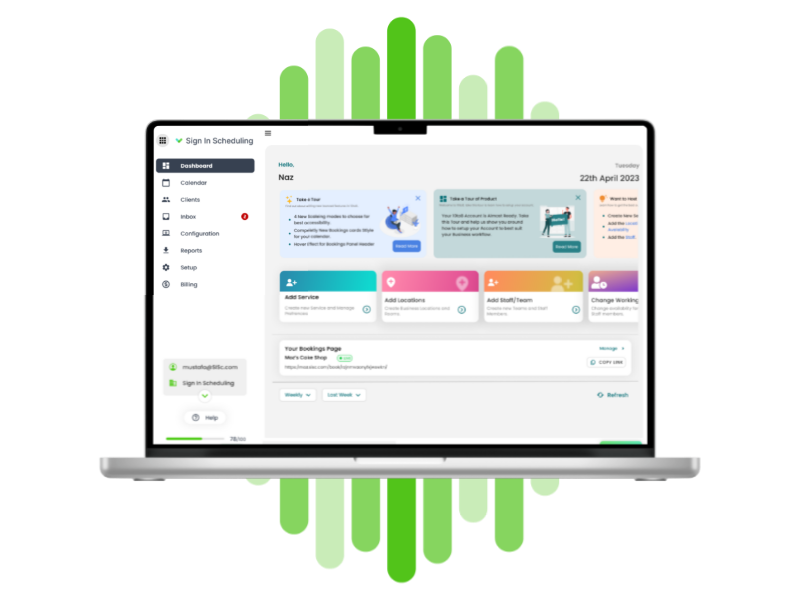If you work in sales you’re usually also pretty familiar with numbers — whether those numbers...
How to Increase Your Online Sales Conversion Rate
Do you want to scale your business? Of course you do! Who doesn’t? One way to increase your income is by increasing the number of sales that come through your website. If you are struggling to generate revenue from your website, it may be time for a conversion rate optimization strategy.
Conversion rates can be difficult to understand at first because they cover so many different aspects of the process. For instance, how visitors arrive on the site, what people do when they get there, and how often they buy something.
If you want to sell more products online, you need to focus on increasing your conversion rate. Regardless of how many visitors come to your website, if they don’t become customers then it’s not worth the time or effort.
The good news is that once you know more about how conversions work, you will find them easier to improve. Today, we’re going to talk about the fundamentals of increasing your sales conversion rate, and important things to pay attention to if you’re trying to do this.
What is an online sales conversion rate?
A sales conversion rate is the number of website visitors that turn into customers. For example, if you’re selling a product, this number would be how many people buy whatever it is you’re offering out of everyone who visits your site.
These types of metrics are important because they show you how well your website is performing. If your conversion rate is low, it means that not enough people are buying what you’re selling. This could be a sign that something needs to change on your site – like the design, the copywriting, or something larger like the product offer itself.
How do you measure your conversion funnel optimization?
There are different ways to measure your conversion funnel optimization. You can use Google Analytics, or you use an email marketing tool like Mailchimp.
Some of the best ways to measure a sales conversion rate, however, are through using heatmaps or session recordings. This is because they show you how people are really using your website – not just how many people are visiting it.
Another key way to measure your conversion rates is by analyzing your sales funnel and testing different variations to see which ones work the best.
Do you need to set up a sales funnel?
Yes, I would highly recommend setting up a sales funnel. A sales funnel is effectively the journey that all of your customers go through in order to become customers. It is usually in stages and each stage pushes the customer closer to making a purchase.

A sales funnel is important because it helps you to convert more website visitors into customers. It does this by guiding your website visitors through a series of steps that eventually lead them to buy whatever it is that you’re selling.
This process usually starts with getting your website visitors or even social media followers to sign up for your email list. You can then send them marketing emails that will introduce them to what you’re selling, and eventually guide them towards making a purchase. However, there are quite a lot of stages of a sales funnel.
What stages should your sales funnel have?
Good conversion funnel optimization should have at least three stages but usually has six. These are:
- Awareness – This is the first stage of your sales funnel. Here you’re trying to make people aware of your business. You can do this through an email list, or even using SEO techniques to rank blog articles. Anything that means people who weren’t aware of you before will have a greater idea of your business.
- Interest – This is the second stage of your sales funnel, where you’re trying to get people interested in what you’re selling. You can do this by providing free content or samples, providing a demonstration of your product, or using a tempting lead magnet on your website that introduces them to what you’re selling.
- Desire – This is the third stage of your sales funnel, and it’s where you start to introduce the idea of becoming a paying customer to your website visitors. You can do this by providing special offers and discounts to people who are interested in what you’re selling, offering a free trial, or anything else that will tempt them to use your product.
- Decision – This is the fourth stage of your sales funnel, and it’s where people will decide whether or not they want to move forwards with your product. This stage will determine whether or not they will become paying customers. You can help move this stage along by assisting with any questions or problems that customs might have with your product and making sure that the customer is happy. You could also tempt them into making a decision by offering an initial product offer only for new customers, which might help get them through the door.
- Action – This is the fifth stage of your sales funnel, and it’s where you finally get people to buy what you’re selling. You can do this by making it easy for them to purchase your product or service, and by giving them discounts if they buy quickly.
- Retention – The sixth stage of your sales conversion funnel is all about nurturing. This is where you continue to take care of your customers after they’ve made a purchase in order and basically ensures that those customers stay customers and don’t move to one of your competitors. You can do this by providing post-purchase follow-up emails or special offers for loyal customers who have bought before.
What is important when improving your sales conversion rate?
So, what are the most important things to focus on when you’re trying to improve your sales conversion rate?
Here are some of the key factors that you’ll want to consider:
Pay attention to SEO
SEO is vital when you’re trying to improve your sales rate. This is because you want your website to be as high up as possible in the search engine results pages (SERPs) so that more people will see it. You can do this by using the right keywords, and by optimizing your website content, blog posts, and landing pages for them.
Make sure your website is user-friendly
This means making sure that all of your web pages are easy to navigate, and that all of your contact information is easily accessible. You should also make sure that you have a good quality logo and branding, as this will help to create a positive impression of your website.
Offer free content
People are more likely to buy something if they’re familiar with it first. This means providing free content that introduces them to what you’re selling. This could take the form of a free report or something like an e-course that allows people to get used to your product or service. If you offer a Saas-based business, like 10to8, you might want to offer a free trial so that potential customers can try out your service before they make a decision.
Define your target market
Defining your market is another vital stage when increasing your sales conversions. This is because you want to make sure that you know who you’re writing for so you can best target this content to them. You can usually find your target market by thinking about who would be most interested in your products. You can look at where most of your customers usually hand out and also by figuring out their personal buying habits.
Appeal to your audience
Once you’ve defined your audience, it’s important to appeal to them in order to get them interested in what you’re selling. This could mean using the right language or targeting their fears and desires. You can also create emails or social media posts that are specifically designed for them in order to boost your sales conversion rate.
Capture your audience’s attention
It’s important to use eye-catching images and headlines that will draw your audience in, as well as using the right tone of voice. You should also make sure you have a good call to action, such as using a compelling lead magnet to get people to sign up for your email list.
Include social proof
This is where you show your audience that other people have already bought what you’re selling. This could take the form of customer testimonials on your website, case studies, or even something as simple as showing how many people are following you on social media.

Increase your email subscribers
It’s a known fact that email subscribers are more likely to buy from you than people who aren’t on your list. You can tempt people to sign up for your email list by offering something useful or by using a popup that asks them to subscribe. However, be sure to do this in moderation because popups can be super annoying!
Use an email drip campaign
Once you have a good amount of email subscribers, it’s a good idea to use an email drip campaign that will provide them with relevant information about your business. This means showing people what you’re selling and how it works in the form of emails.
You could do this by using a series of emails that talk people through getting set up with your product, or explaining to them what you’re about. This could involve a step-by-step guide over a series of messages, or even something fun or interactive to get them engaged with your brand.
Make sure all touchpoints are consistent
Customers who go through different stages in your sales funnel need to be given the same information each time, however not every customer will be at the same stage of the funnel. Your touchpoints with your customers should all be consistent but also depend on what stage they are in. You can also link this in with your drip campaign.
Be sure to follow up with every lead
Even if they haven’t bought anything, it’s important to follow up with every lead that comes into your business. This is because even if someone isn’t interested in what you’re selling right now, they might be later on when things change in their life. Of course, that doesn’t mean investing lots of time and effort into people who were ever going to become costumes, but simply letting people know that you’re happy to help, or sending people emails even if they aren’t going to buy from you, can go a long way to changing people’s minds about a brand.
Be sure to nurture every lead
This is the same as following up with every lead, but it’s more long-term. Nurturing a lead means providing them with relevant information over an extended period of time. This could be something as simple as making sure they don’t have any questions, so something as complicated as helping them troubleshoot a problem.
Have a clear call to action
Your call to action should be clear and easy to understand, as well as being placed prominently on your website and throughout your sales funnel. This is the button or link that people will need to click in order to buy from you.
Create a strong offer
This is an offer that’s so good that people will find it hard to resist. You can do this by providing special discounts, or by making your product or service available for a limited time only.
Measure your metrics
Finally, it’s important to track your progress so that you can see what’s working and what isn’t. This means setting up goals and measuring how close you are to reaching them. You can then use this information to make changes in order to improve your sales conversion rate.
Overall…
Overall, if you want to increase your sales conversion rate, you need to focus on creating a good offer, appealing to your audience, and using the right tactics to capture their attention. You should also make sure that all of your touchpoints are consistent, and that you’re following up with every lead. Finally, it’s important to track your progress so you can see what’s working and what isn’t.
Hopefully, you can use this information to make changes, improve your sales conversion rate, and grow your business in the process.






Blog comments